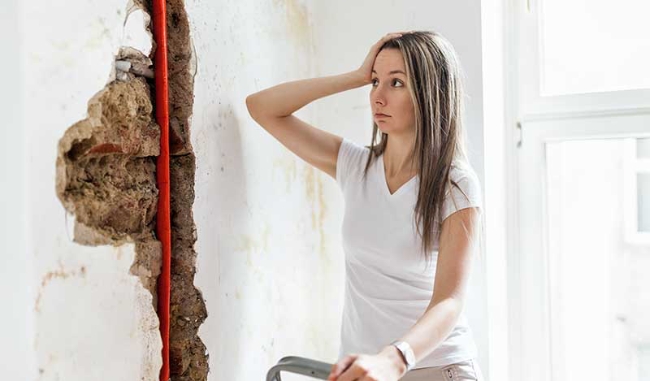Water is an essential resource that we all appreciate, but it can become a nightmare, too. Leaks and bursting pipes can cause thousands of dollars in damages to our residences and businesses.

Water is an essential resource that we all appreciate, but it can become a nightmare, too. Leaks and bursting pipes can cause thousands of dollars in damages to our residences and businesses.
That’s why homes built within the last 20 years typically have two shut-off valves, one for the water utility (called a supply-side shut-off) and one for you (called a house line shut-off.) the reason you have a house line shut-off is to enable you to protect your home if a leak occurs.
With one leak or bursting pipe, your home could undergo damage by the time a utility technician arrives to disconnect the water at your meter. Therefore, make sure you. Have a house line water shut-off valve installed. It’s vital to protecting your home and minimizing damage. Should such a situation arise, you don’t want to feel helpless.
Imagine this scenario: A pipe breaks inside your home and is flooding all your belongings. You call the utility company, but they cannot arrive for an hour or so. Instead of worrying about emergencies like this, you can quickly turn off the water through a house shut-off valve. Then you can deal with correcting the source of the leak.
How Do I Know if I have a Houseline Shut-Off Valve?
If you don’t know where your house line shut-off valve is, you will need to locate it. Houseline shut-off valves are located in various areas. Here are some places you may find yours:
• The intersection of hot and cold water pipes.
• Outside your home, near the water meter.
If you can’t find your water shut off valve, you can easily add a shut-off valve or an additional location. This way, you can
shut off the water supply to some regions of the home, but not to others.
Installing a Houseline Shut-Off Valve
It’s actually effortless and chaperons than hiring a certified plumber. However, we suggest you seek the advice of a licensed professional plumber if you are unaware of your home plumbing. All of the supplies you’ll need are available at your local hardware store.
How to Do It Yourself
Step 1
Purchase the supplies for your house service line. Most lines are 3/4” in diameter.
• One PVC ball valve
• Minimum 3” of PVC
• One pressure coupling
• PVC cleaner
• PVC glue
• One permanent ink marker
Step 2
Call our customer service and request a temporary meter shut off for valve installation.
Step 3
Clean at least 3” of PVC and glue it into one end of the PVC ball valve.
Step 4
Expose at least 12” of the house service line within 2 feet of the meter box.
Step 5
Place the assembled ball valve and PVC next to the exposed house service line. Mark the house service line.
Step 6
Once the water service is disconnected, cut out the marked section of the house service line, and line the compression fitting on the line.
Step 7
Clean and glue the other end of the ball valve and house service line. Slide both together with a twisting motion. The valve
should be upright.
Step 8
Slide the compression fitting on the PVC coming out of the other end at least 1” inch of the ball valve and tighten (do not over tighten).
Step 9
Install the valve box and lid over the valve before refilling any holes. Be sure to flush your system at an outside faucet until the line is clear. Flushing avoids introducing dirt into your home and possible clogs with faucet screens.
